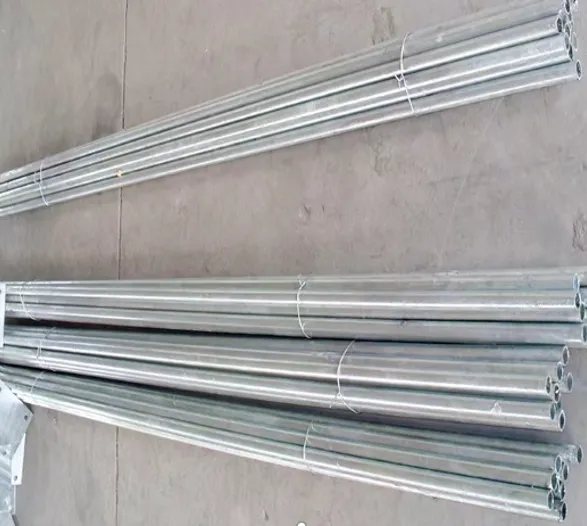loading...
- No. 9, Xingyuan South Street, Dongwaihuan Road, Zaoqiang County, Hengshui, Hebei, China
- admin@zjcomposites.com
- +86 15097380338
- Welcome to visit our website!
Versatile Applications of 38mm GRP Grating in Industrial Settings
Understanding 38mm GRP Grating A Comprehensive Overview
In recent years, the use of Glass Reinforced Plastic (GRP) grating has gained significant traction across various industries. Among the different sizes available, 38mm GRP grating stands out due to its impressive strength-to-weight ratio, versatility, and durability. This article explores the key features, benefits, and applications of 38mm GRP grating, emphasizing its importance in modern engineering solutions.
What is GRP Grating?
GRP grating, often referred to as fiberglass grating, is a composite material made from a combination of glass fibers and a resin matrix, typically unsaturated polyester or epoxy. This composition provides the material with exceptional structural integrity, resistance to corrosion, and low maintenance requirements. The grating is manufactured in various sizes and configurations, with 38mm being a popular choice for many applications.
Key Features of 38mm GRP Grating
1. Load-Bearing Capacity One of the defining characteristics of 38mm GRP grating is its robust load-bearing capability. It is engineered to support various weights while maintaining its structural integrity, making it suitable for both pedestrian and vehicular traffic.
2. Corrosion Resistance Unlike conventional steel gratings, GRP does not corrode, rust, or require protective coatings. This property is especially beneficial in harsh environments, including chemical processing plants, offshore platforms, and marine applications.
3. Lightweight Construction With a significantly lower weight compared to metal counterparts, 38mm GRP grating offers ease of installation and reduced transportation costs. This lightweight nature does not compromise strength and is ideal for applications where weight constraints are critical.
4. Safety Features GRP grating is available with non-slip surfaces, ensuring safety in high-footfall areas. This makes it an excellent choice for walkways, platforms, and stairs, where slip hazards are a concern.
5. Sustainability As industries move toward greener solutions, GRP grating provides an environmentally friendly option. It is often manufactured with recycled materials and can be fully recyclable at the end of its life cycle.
38mm grp grating

Applications of 38mm GRP Grating
The versatility of 38mm GRP grating allows it to be utilized in numerous applications across different sectors
- Industrial Facilities In factories and manufacturing plants, GRP grating is commonly used for flooring, walkways, and work platforms due to its durability and easy installation.
- Water Treatment Plants The corrosion-resistant nature of GRP grating makes it ideal for wastewater and water treatment facilities, where exposure to harsh chemicals is prevalent.
- Oil and Gas Industry Offshore platforms and drilling rigs benefit from GRP grating’s lightweight and corrosion-resistant properties, ensuring safety and longevity in challenging environments.
- Construction Projects In construction, 38mm GRP grating is often incorporated into scaffolding and temporary walkways, providing secure and resilient access points.
- Transport Infrastructure Additionally, GRP grating is utilized in pedestrian walkways, bridges, and railway platforms, where its strength and slip resistance are paramount.
Conclusion
In summary, 38mm GRP grating represents a significant advancement in materials used for industrial and commercial applications. Its unique properties, including high load-bearing capacity, corrosion resistance, lightweight nature, and safety features, position it as a preferred choice across various sectors. As industries continue to seek innovative and sustainable solutions, 38mm GRP grating will likely remain a vital component in the design and implementation of infrastructure projects worldwide. Embracing this technology can lead to safer, more efficient, and environmentally friendly operational practices, aligning well with the goals of modern engineering and construction.
-
The Rise of FRP Profiles: Strong, Lightweight, and Built to LastNewsJul.14,2025
-
SMC Panel Tanks: A Modern Water Storage Solution for All EnvironmentsNewsJul.14,2025
-
GRP Grating: A Modern Solution for Safe and Durable Access SystemsNewsJul.14,2025
-
Galvanized Steel Water Tanks: Durable, Reliable, and Ready for UseNewsJul.14,2025
-
FRP Mini Mesh Grating: The Safer, Smarter Flooring SolutionNewsJul.14,2025
-
Exploring FRP Vessels: Durable Solutions for Modern Fluid HandlingNewsJul.14,2025
-
GRP Structures: The Future of Lightweight, High-Performance EngineeringNewsJun.20,2025
